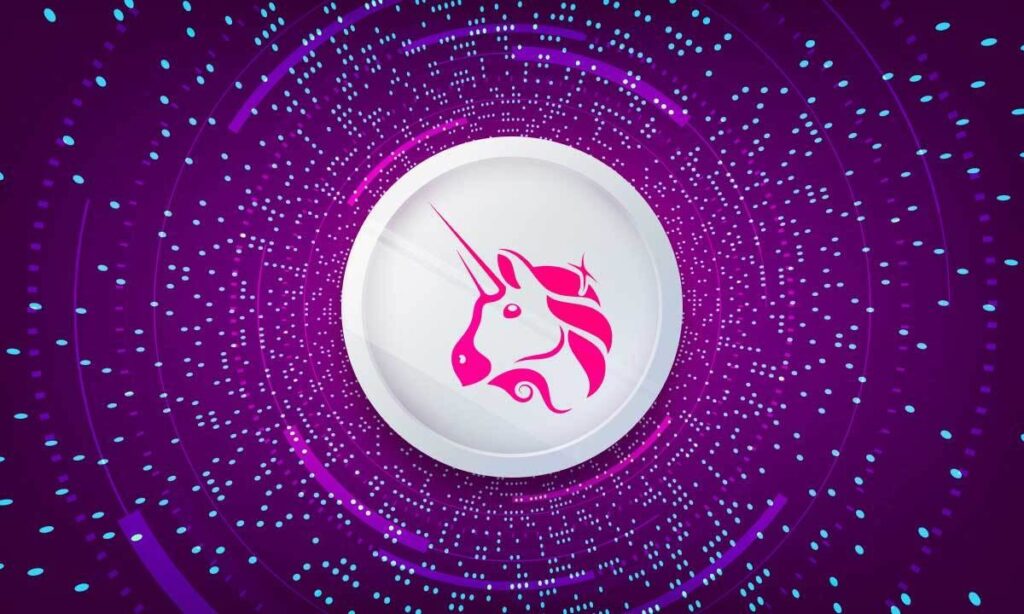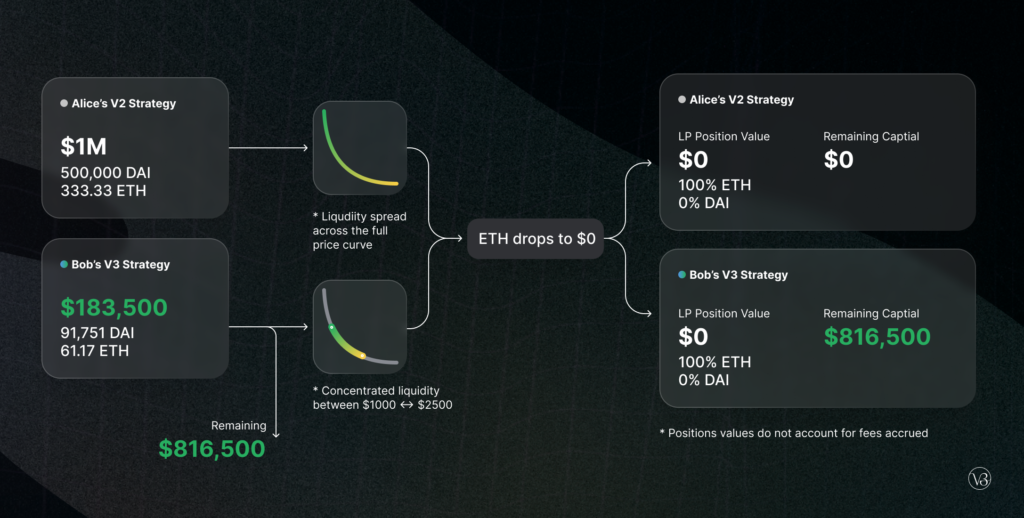

Uniswap
Introduction:
Your Attractive Heading
Welcome to the exciting and fast-evolving world of DeFi: own your assets, enjoy frictionless trading with zero middlemen involved, and dive into more free and inclusive finance.
If one is already used to Uniswap, then he realizes very well that this is one of the most innovative, widely applied platforms in the crypto space. Otherwise, put your seatbelt on because you’re about to dive head-first into something revolutionary, going to blow your mind and change the way one has been thinking about money.
Uniswap is not a DEX, but merely a gateway to this new world of freedom and opportunity in finance. In this post, let’s understand exactly why Uniswap has gained the largest following among traders, liquidity providers, and anyone who believes in the power of decentralized protocols. Considering its special features and added ease courtesy of the platform, Uniswap had positioned itself in the lead within the DeFi space, especially upgrades included in Uniswap V2 and even further into Uniswap V3.
Uniswap Exchange



Instructions for download uniswap
Diving into the world of cryptocurrency but feeling overwhelmed by the technical aspects of
downloading and setting up Uniswap? You’re not alone. Many crypto enthusiasts struggle with the initial
setup of their digital wallets, especially when it comes to navigating the complexities of decentralized
exchanges like Uniswap.
Imagine having complete control over your digital assets with the power to trade, swap, and manage
your cryptocurrencies seamlessly. Whether you’re a crypto novice or an experienced trader,
understanding how to properly download and set up your Uniswap wallet is crucial for your success in
the DeFi space. From securing your private keys to executing your first transaction, we’ve got you
covered with a comprehensive guide that breaks down every step of the process.
Let’s walk through everything you need to know about downloading Uniswap, from understanding the
basics of public and private keys to connecting your wallet and managing transactions safely. Here’s
your roadmap to becoming a confident Uniswap user… �
Public Key, Private Keys, and Recovery Phrases
Understanding the Fundamentals
A cryptocurrency wallet’s security revolves around three crucial elements: public keys, private keys, and
recovery phrases. Each serves a distinct purpose in securing and managing your digital assets on
Uniswap and other platforms.
Component Purpose Should You Share?
Public Key Receives funds and identifies your wallet Yes – Safe to share
Private Key Authorizes transactions and proves ownership Never share
Recovery Phrase Backup to restore wallet access Never share
Private Keys and Their Importance
Your private key is essentially your digital signature in the cryptocurrency world. It’s a complex string of
numbers and letters that:
Proves ownership of your digital assets
Signs transactions to authorize transfers
Provides complete control over your wallet
Must remain absolutely confidential
Public Keys Explained
Public keys function as your wallet’s address, similar to an email address. They have these
characteristics:
Generated from your private key through cryptography
Safe to share with others for receiving funds
Visible on blockchain explorers
Cannot be used to access your funds
Private Keys vs. Recovery Phrases
Recovery phrases, also known as seed phrases, offer a more user-friendly alternative to managing
private keys. Here’s how they compare:
- Format Differences:
Private keys: Long hexadecimal strings
Recovery phrases: 12-24 common words in a specific order- Security Features:
Both provide wallet access
Recovery phrases can generate multiple private keys
Recovery phrases are easier to backup and store- Usage Scenarios:
Private keys: Used directly by advanced users
Recovery phrases: Preferred by most wallet applications
Best Practices for Key Management
To maintain the security of your Uniswap wallet, follow these essential guidelines:- Storage Methods:
Never store keys digitally (no screenshots or digital documents)
Use physical paper or metal backups
Keep multiple copies in separate secure locations- Security Measures:
Never share private keys or recovery phrases
Avoid typing them on potentially compromised devices
Consider using a hardware wallet for additional security- Recovery Planning:
Document your recovery process
Test recovery procedures before storing significant funds
Inform trusted family members about backup locations
When setting up your Uniswap wallet, you’ll first need to understand these fundamental concepts before
proceeding to interact with the blockchain. This knowledge forms the foundation of your cryptocurrency
security and ensures you can manage your digital assets safely.
Backup Method Pros Cons
Paper Backup Easy, free, quick Vulnerable to physical damage
Metal Backup Durable, fireproof More expensive, takes time
Backup Method Pros Cons
Hardware Wallet Most secure, convenient Costly, requires technical knowledge
Now that you understand the critical components of wallet security, you’re ready to learn how to interact
with the blockchain effectively.
Download Uniswap Wallet App
Store & Transfer UNI Safely
The Uniswap wallet app provides a secure environment for managing your UNI tokens. The app employs
advanced encryption protocols and biometric authentication to ensure your assets remain protected.
Monitor Your UNI Balance in USD
Track your portfolio’s value in real-time with automatic USD conversion. The dashboard displays:
Current UNI token price
24-hour price changes
Portfolio performance graphs
Transaction history
Receive UNI in ETH Network
Receiving UNI tokens is straightforward through the Ethereum network:- Access your wallet address
- Share the address with the sender
- Verify transaction confirmation
- Monitor gas fees automatically
Network Type Average Confirmation Time Gas Fee Range
ETH Mainnet 3-5 minutes Variable
Network Type Average Confirmation Time Gas Fee Range
Layer 2 1-2 minutes Lower
Send Uniswap by Mobile Phone Number
The app introduces a user-friendly feature allowing transfers via mobile numbers:
Zero-fee transfers between Uniswap wallet users
Instant transactions
No complex addresses needed
Built-in address book integration
UNI Wallet Mobile App for iOS and Android
Available on both major platforms, the app features:
Native platform integration
Push notifications for transactions
Touch/Face ID security
Automatic backup options
Real-time market updates
Now that you have your Uniswap wallet set up, let’s explore how to effectively store your digital assets.
How to Download Uniswap
Step-by-Step Installation Guide- Visit the Official Website
Navigate to app.uniswap.org
Ensure you’re on the legitimate website by checking the URL
Look for the “Connect Wallet” button in the top right corner- Choose Your Platform
Mobile devices: Download from App Store (iOS) or Google Play Store (Android)
Desktop: Access directly through web browser
Browser extension: Install MetaMask or compatible wallet
Platform-Specific Instructions
Mobile Installation- Open your device’s app store
- Search for “Uniswap Wallet”
- Verify the developer (Uniswap Labs)
- Click “Install” or “Get”
- Allow necessary permissions
- Launch the app
Desktop Browser Access- Open your preferred web browser
- Navigate to app.uniswap.org
- Bookmark the page for safety
- Connect your existing wallet
Compatible Wallets
Wallet Type Compatibility Security Level Recommended For
MetaMask High Medium-High Regular traders
WalletConnect High High Mobile users
Coinbase Wallet High High Beginners
Ledger High Very High Large holdings
Trust Wallet High Medium-High Mobile-first users
Initial Setup Requirements
Technical Requirements
Stable internet connection
Updated browser/operating system
Sufficient device storage
Compatible device (iOS 13+/Android 8+)
Account Prerequisites
Email address (optional)
Existing ETH wallet (recommended)
Small amount of ETH for gas fees
Post-Installation Configuration- Wallet Connection
Select preferred wallet
Approve connection request
Confirm wallet address- Network Selection
Choose Ethereum mainnet
Add other networks if needed
Verify network fees- Security Setup
Enable biometric authentication
Set up PIN/password
Review privacy settings
Troubleshooting Common Issues
Connection Problems
Clear browser cache
Disable VPN
Update wallet app
Check network status
Installation Errors
Free up device storage
Update system software
Uninstall and reinstall
Check device compatibility
Best Practices
Always verify URLs
Use secure internet connections
Keep software updated
Enable all security features
Backup wallet information
Start with small transactions
Monitor gas fees
Performance Optimization- Speed Improvements
Clear cache regularly
Close unnecessary apps
Use recommended browsers
Optimize network connection- Storage Management
Regular cleanup
Remove unnecessary data
Maintain sufficient free space
Now that you have successfully downloaded Uniswap, the next step is to learn how to properly store and
transfer your UNI tokens safely. This ensures your digital assets remain secure while allowing you to
participate fully in the Uniswap ecosystem.
Transaction Management
Understanding Transaction Basics
Managing your transactions effectively is crucial when using Uniswap. Here’s a comprehensive
breakdown of essential transaction components and best practices:
Transaction Hash (TxHash)
Gas Fees
Transaction Status
Network Confirmations
Transaction History
Transaction Types on Uniswap
Transaction Type Description Average Processing Time
Token Swaps Exchange one token for another 1-5 minutes
Liquidity Provision Add/remove liquidity pools 2-7 minutes
Token Approvals Authorize smart contracts 1-3 minutes
Failed Transactions Unsuccessful due to various reasons N/A
Managing Gas Fees
Gas fees are a crucial aspect of transaction management on Uniswap. Here’s what you need to know:- Gas Price Optimization
Monitor network congestion
Use gas tracking tools
Choose optimal transaction times
Set appropriate gas limits- Gas Saving Strategies
Batch transactions when possible
Consider layer 2 solutions
Wait for lower network activity
Use gas price alerts
Transaction Monitoring Tools
Several tools can help you manage your Uniswap transactions effectively:
Etherscan – Track transaction status
Gas Now – Monitor gas prices
Uniswap Analytics – View trading history
DeFi Portfolio Trackers – Monitor overall activity
Troubleshooting Common Transaction Issues- Pending Transactions
Check gas price settings
Verify wallet balance
Confirm network status
Consider transaction acceleration- Failed Transactions
Insufficient gas
Slippage tolerance
Token approval issues
Network congestion
Best Practices for Transaction Management- Record Keeping
Maintain transaction logs
Store important TxHashes
Track gas expenses
Document trading pairs- Risk Management
Set reasonable slippage limits
Double-check recipient addresses
Verify token contracts
Monitor price impact
Advanced Transaction Features
Speed Up and Cancel Transactions
Replace-by-fee (RBF)
Transaction acceleration services
Cancel pending transactions
Emergency stop procedures
Automation and Scheduling
Set limit orders
Schedule recurring transactions
Use trading bots
Implement stop-loss orders
Transaction Security Measures- Before Transaction
Verify wallet connection
Check token addresses
Confirm transaction details
Review gas settings- During Transaction
Monitor confirmation status
Watch for warning messages
Check for front-running
Verify output amounts- After Transaction
Confirm receipt
Document transaction details
Review token balances
Update records
Performance Analysis
Track your transaction performance using these metrics:
Metric Purpose Importance
Success Rate Monitor failed vs. successful transactions High
Gas Efficiency Track gas costs over time Medium
Slippage Impact Measure price impact on trades High
Time to Finality Track confirmation speeds Medium
Now that you understand how to manage your transactions effectively, it’s important to know how to
properly store and secure your digital assets. This includes implementing proper backup procedures and
maintaining multiple copies of important information.
How do I keep my crypto wallet secure?
Essential Security Practices- Strong Password Implementation
Create a unique password with at least 12 characters
Combine uppercase, lowercase, numbers, and special characters
Avoid using personal information or common phrases
Never reuse passwords across different wallets or platforms
Multi-Factor Authentication (MFA)
Implementing MFA adds an crucial security layer to your crypto wallet. Here’s what you need to know:
MFA Method Security Level Convenience
SMS 2FA Basic High
Authenticator Apps High Medium
Hardware Keys Very High Low
Backup and Recovery Measures
Recovery Phrase Management- Write down your recovery phrase physically
- Store multiple copies in different secure locations
- Never store recovery phrases digitally
- Consider using a fireproof safe for storage
Hardware Security
Keep your device’s operating system updated
Install reliable antivirus software
Use a hardware wallet for large holdings
Enable device encryption
Avoid using public WiFi networks
Advanced Security Protocols
IP and Network Security
Use a VPN when accessing your wallet
Implement whitelist addresses for frequent transactions
Enable spending limits
Regular security audits of connected devices
Best Practices for Daily Use- Transaction Verification
Double-check recipient addresses
Verify transaction amounts
Review gas fees
Confirm network settings- Access Management
Log out after each session
Clear browser cache regularly
Use dedicated devices for crypto transactions
Avoid sharing wallet information
Common Security Threats and Prevention
Phishing Protection- Verify website URLs carefully
- Never click on suspicious links
- Don’t share private keys or recovery phrases
- Use bookmarks for frequently visited platforms
Malware Prevention
Regular malware scans
Download applications only from official sources
Keep firmware updated
Monitor for unauthorized access attempts
Emergency Security Measures
Create an emergency response plan:- Compromise Detection
Set up transaction notifications
Monitor wallet activity regularly
Enable address whitelisting
Implement time locks for large transactions- Recovery Procedures
Document step-by-step recovery process
Keep emergency contact information readily available
Maintain backup access methods
Store critical information securely
Regular Security Maintenance
Implement a security checklist:- Weekly Tasks:
Review recent transactions
Update passwords
Check for software updates
Verify backup integrity- Monthly Tasks:
Full security audit
Test recovery procedures
Update emergency contacts
Review security settings
Critical Security Tips- Never Share These Items:
Private keys
Recovery phrases
Wallet passwords
Security answers- Always Verify:
Platform authenticity
Smart contract addresses
Transaction details
Connection requests
Now that you understand how to secure your crypto wallet effectively, it’s important to implement these
measures consistently. The next step is to explore how to efficiently manage your transactions while
maintaining these security protocols in place
Conclusion:
Uniswap is going to be the future of finance. Uniswap was a radical rethink in terms of how to design trading and finance. Never before had the intermediaries been removed, and power given to the user; it was a living, breathing ecosystem that kept on growing and evolving. Understanding how Uniswap functions and the advantages related to it will even help an experienced trader comprehend better how to act in DeFi. Continuing to explore the possibilities that become available through Uniswap, stay tuned for feature developments in Uniswap V3-they are bound to upgrade your trading experience even further. Uniswap represents the forefront of innovation in fields such as DeFi and blockchain. It thusinously offers users a platform on which they can vend, invest, and make returns independent of their preferences. This is where people can, financially, move away from most of the restrictive elements in traditional systems of finance. Due to the fact that it’s decentralized, passive income through the provision of liquidity is offered wherein users get rewarded for their contributions into the liquidity pools. Therein, it also sets the stage for the future of finance-to-be and opens it to all. Ready to jump into the pool with the DeFi revolution? This is where Uniswap greets you, and with improvements attained in Uniswap V2 and the novelties introduced in Uniswap V3, there hasn’t been a better time to do so.
